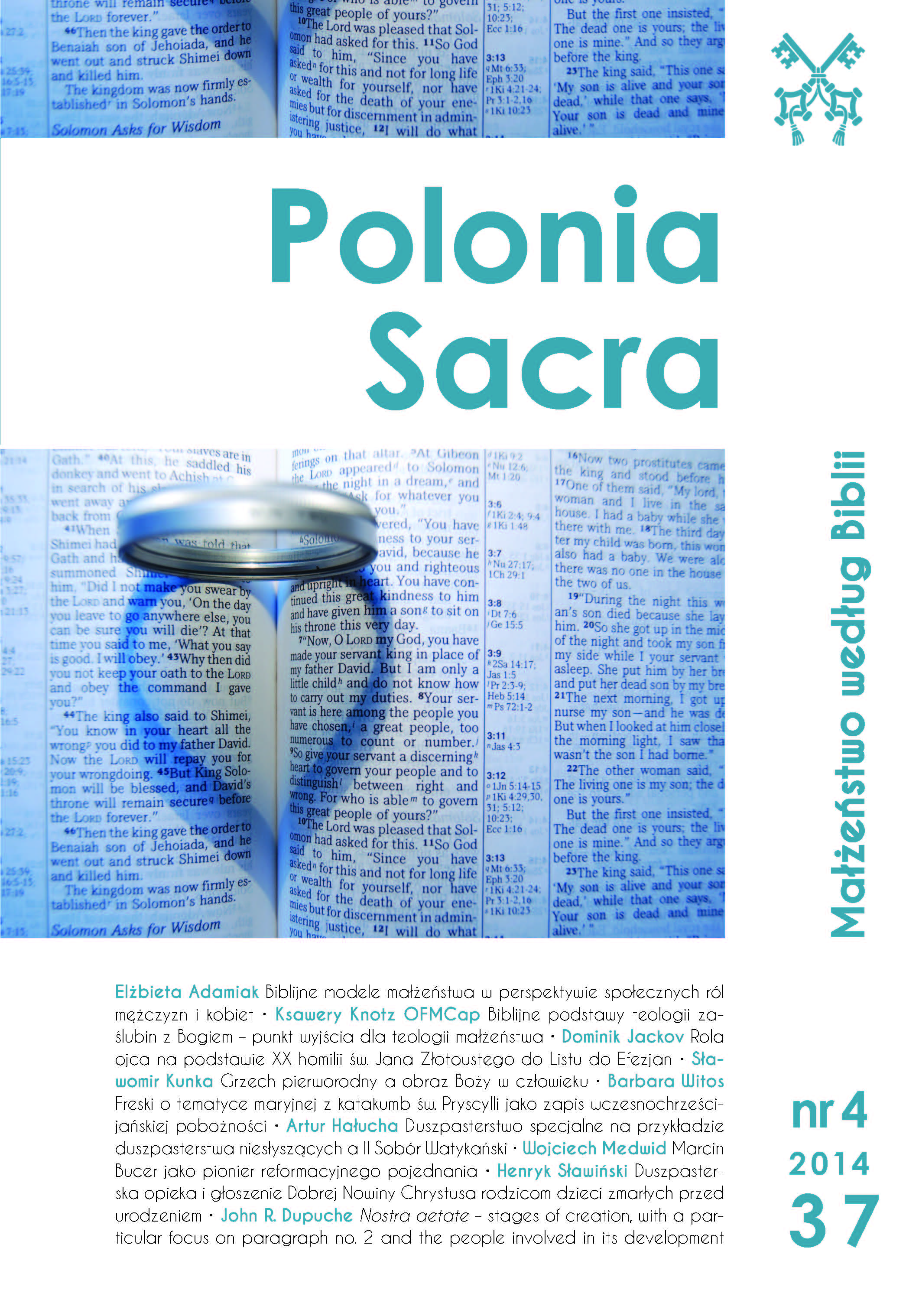Freski o tematyce maryjnej z katakumb św. Pryscylli jako zapis wczesnochrześcijańskiej pobożności
The frescoes devoted to the Virgin Mary of the catacombs of St. Priscilla as a record of early Christians piety
Author(s): Barbara WitosSubject(s): History of Church(es), Visual Arts, Sociology of Art, Sociology of Religion
Published by: Wydawnictwo Naukowe Uniwersytetu Papieskiego Jana Pawła II w Krakowie
Keywords: catacombs; frescoes of the Mary; painting; piety; early Christian art; underground cemeteries;
Summary/Abstract: The frescoes of the catacombs of Priscilla, discussed in the article, were formed between the end of the second century to the fourth century. Up to the twentieth century all three were considered as devoted to St. Mary, but then criticism rejected the third of them (the fresco in the cubicle known as the The Velatio, representing three events from the life of an unknown woman). The two other paintings (Mary with the Infant Jesus and The Annunciation) may show the Christians’ devotion to St. Mary in the period from the turn of the second and third centuries to the fourth century. It can be stated that the cult of Our Lady existed always in consideration of Her relation to Jesus. It never existed as a separate and exclusive worship of Mary herself. Since the turn of the second and third century to the fourth century, Christians particularly stressed the importance of Mary as the Mother of the Messiah announced by the prophets and as the Mother of the Savior. Frescoes devoted to the Virgin Mary of the catacombs of St. Priscilla depict also the theme of dead Christians’ prayers who are asking Mary as the Mother of the Messiah for intercession for them with God. The paintings do not give Mary a central place on the images what is a theological confirmation of Her subordinate role in the history of God’s plan of salvation.
Journal: Polonia Sacra
- Issue Year: 18/2014
- Issue No: 4
- Page Range: 81-99
- Page Count: 19
- Language: Polish

